CFD Study of Gas Holdup and Frictional Pressure Drop of Vertical Riser Inside IC Reactor
Abstract
1. Introduction
2. Mathematical Model and Method
2.1. Conventional Model for Internal Circulation System
2.2. Multiple Flow Regimes (MFR) Model
- For the interaction of multiphase flow, a primary phase and a secondary phase are defined. For example, water is designated as the first phase and air as the second phase.
- According to the definition of interphase action, three topological structures are defined: the main phase flow pattern, air as the dispersed phase (bubble); the interface flow pattern, water and air are not the dispersed phase; the secondary phase flow pattern, water as the dispersed phase (droplet).
- The mesh with large interface is detected, the general topological structure in each mesh is determined, and the weight functions of each topological structure are calculated, which are , , and , respectively.
- Calculation of the interphase forces of each sub-topology in all meshes: , , . The subscripts fr, ir, and sr represent first regime, interface regime, and second regime, respectively. The relationships between weight function of three regimes and volume fraction of second phase can be found in Figure 2.
- The total interaction force of each sub-topology is calculated by weight function and interaction force:
2.3. Geometry Model and Mesh Generation
3. Results and Discussion
3.1. Flow Patterns and Internal Circulation Flow Rate
3.2. Gas Holdup of Vertical Riser
3.3. Frictional Pressure Drop of Vertical Riser
4. Conclusions
Author Contributions
Funding
Conflicts of Interest
Nomenclature
| Primary criteria of the thickness of the raw interface (-) | |
| Friction factor (-) | |
| Interphase force (N) | |
| Gravity (m/s2) | |
| Mass flux of gas (kg/m2/s) | |
| Mass flux of liquid (kg/m2/s) | |
| Height from the bottom of the second reaction chamber to the outlet of the wastewater (m) | |
| Length of the riser (m) | |
| Weight functions of topological structure (-) | |
| Pressure drop (Pa) | |
| Surface area of the cell (m2) | |
| Volume of the cell (m3) | |
| Mass flow rate of gas (kg/s) | |
| Mass flow rate of liquid (kg/s) | |
| Martinelli parameter (-) | |
| Greek letters | |
| Gas holdup (-) | |
| Volume fraction (-) | |
| Viscosity of gas (Pa·s) | |
| Viscosity of liquid (Pa·s) | |
| Density of gas (kg/m3) | |
| Density of liquid (kg/m3) | |
| Two-phase friction multiplier (-) | |
| Subscripts | |
| Accelerational | |
| Grid A | |
| Two lines of the centroids of grid A and grid B | |
| Grid B | |
| Phase | |
| Cell-face | |
| First regime | |
| Frictional | |
| Gravitational | |
| Individual component of phase | |
| Interface regime | |
| Liquid | |
| Mean | |
| Maximum | |
| Primary | |
| Phase interaction | |
| Secondary | |
| Second regime | |
| Scalar | |
References
- Wang, Y.; Liu, X.; Zhuang, W.; Zhou, J.; Wang, J. Advance: IC reactor for high strength industrial wastewater treatment and biogas production. In Proceedings of the 2011 International Conference on Materials for Renewable Energy & Environment IEEE, Shanghai, China, 20–22 May 2011. [Google Scholar]
- Pereboom, J.H.F.; Vereijken, T.L.F.M. Methanogenic granule development in full scale internal circulation reactors. Water Sci. Technol. 1994, 30, 9–21. [Google Scholar] [CrossRef]
- Hu, J. A method of design and calculation for internal circulation (IC) reactor. China Biogas 2011, 29, 3–6. [Google Scholar]
- Shannak, B.A. Frictional pressure drop of gas liquid two-phase flow in pipes. Nucl. Eng. Des. 2008, 238, 3277–3284. [Google Scholar] [CrossRef]
- Chen, I.Y.; Yang, K.; Chang, Y.; Wang, C. Two-phase pressure drop of air-water and R-410A in small horizontal tubes. Int. J. Multiph. Flow 2001, 27, 1293–1299. [Google Scholar] [CrossRef]
- Li, X.; Hibiki, T. Frictional pressure drop correlation for two-phase flows in mini and micro single-channels. Appl. Therm. Eng. 2017, 90, 29–45. [Google Scholar] [CrossRef]
- Xiao, B.; Wang, W.; Zhang, X.; Long, G.; Fan, J.; Chen, H.; Deng, L. A novel fractal solution for permeability and Kozeny-Carman constant of fibrous porous media made up of solid particles and porous fibers. Powder Technol. 2019, 349, 92–98. [Google Scholar] [CrossRef]
- Xiao, B.; Zhang, X.; Jiang, G.; Long, G.; Wang, W.; Zhang, Y.; Liu, G. Kozeny–Carman Constant for Gas Flow through Fibrous Porous Media by Fractal-Monte Carlo Simulations. Fractals 2019, 27, 1950062. [Google Scholar] [CrossRef]
- Long, G.; Liu, S.; Xu, G.; Wong, S.; Chen, H.; Xiao, B. A Perforation-Erosion Model for Hydraulic-Fracturing Applications. SPE Prod. Oper. 2018, 33, 770–783. [Google Scholar] [CrossRef]
- Liang, M.; Fu, C.; Xiao, B.; Luo, L.; Wang, Z. A fractal study for the effective electrolyte diffusion through charged porous media. Int. J. Heat Mass Transf. 2019, 137, 365–371. [Google Scholar] [CrossRef]
- Navah, F.; Nadarajah, S. A comprehensive high-order solver verification methodology for free fluid flows. Aerosp. Sci. Technol. 2017, 80, 101–126. [Google Scholar] [CrossRef]
- Knight, D.; Yan, H.; Panaras, A.G.; Zheltovodov, A. Advances in CFD prediction of shock wave turbulent boundary layer interactions. Prog. Aerosp. Sci. 2003, 39, 121–184. [Google Scholar] [CrossRef]
- Xia, H.; Tucker, P.G.; Dawes, W.N. Level sets for CFD in aerospace engineering. Prog. Aerosp. Sci. 2010, 46, 274–283. [Google Scholar] [CrossRef]
- Lestinsky, P.; Vecer, M.; Vayrynen, P.; Wichterle, K. The effect of the draft tube geometry on mixing in a reactor with an internal circulation loop-A CFD simulation. Chem. Eng. Process. Process Intensif. 2015, 94, 29–34. [Google Scholar] [CrossRef]
- Lestinsky, P.; Vecer, M.; Vayrynen, P.; Wichterle, K. Hydrodynamics of Airlift Reactor with Internal Circulation Loop: Experiment vs. CFD Simulation. Procedia Eng. 2012, 42, 892–907. [Google Scholar] [CrossRef]
- Hanafizadeh, P.; Saidi, M.H.; Karimi, A.; Zamiri, A. Effect of Bubble Size and Angle of Tapering Upriser Pipe on the Performance of Airlift Pumps. Part. Sci. Technol. 2010, 28, 332–347. [Google Scholar] [CrossRef]
- Abdulkadir, M.; Hernandez-Perez, V.; Lo, S.; Lowndes, I.S.; Azzopardi, B.J. Comparison of experimental and Computational Fluid Dynamics (CFD) studies of slug flow in a vertical riser. Exp. Therm. Fluid Sci. 2015, 68, 468–483. [Google Scholar] [CrossRef]
- Hanafizadeh, P.; Moezz, M.; Saidi, M.H. Numerical Modeling of Gas-Liquid Two Phase Flow in Upriser Pipe of Airlift System. In Proceedings of the 8th International Conference on Multiphase Flow, Jeju, Korea, 26–31 May 2013. [Google Scholar]
- Ishii, M. Thermo-Fluid Dynamic, Theory of Two-Phase; Eyrolles: Paris, France, 1975. [Google Scholar]
- Wallis, G.B. One-Dimensional Two-Phase Flow; Mcgraw-Hill: New York, NY, USA, 1969. [Google Scholar]
- Drew, D.A.; Passman, S. Theory of Multicomponent Fluids; Springer: New York, NY, USA, 1998. [Google Scholar]
- Gada, V.H.; Tandon, M.P.; Elias, J.; Vikulov, R.; Lo, S. A large scale interface multi-fluid model for simulating multiphase flows. Apply Math Model 2017, 44, 189–204. [Google Scholar] [CrossRef]
- STAR-CCM+. Siemens. Available online: http://mdx.plm.automation.siemens.com (accessed on 5 November 2019).
- Egorov, Y.; Boucker, M.; Martin, A.; Pigny, S.; Scheuerer, M.; Willemsen, S. Validation of CFD codes with PTS-relevant test cases. In Proceedings of the 5th Euratom Framework Programme ECORA Project, Pisa, Italy, 24–25 September 2004. [Google Scholar]
- Höhne, T.; Vallée, C. Modelling of stratified two phase flows using an interfacial area density model. WIT Trans. Eng. Sci. 2009, 63, 123–133. [Google Scholar]
- Höhne, T.; Mehlhoop, J.P. Validation of closure models for interfacial drag and turbulence in numerical simulations of horizontal stratified gas–liquid flows. Int. J. Multiph. Flow 2014, 62, 1–16. [Google Scholar] [CrossRef]
- Tentner, A.; Lo, S.; Ioilev, A.; Samigulin, M.; Ustinenko, V. Computational fluid dynamics modeling of two-phase flow in a boiling water reactor fuel assembly. In Proceedings of the International Conference on Mathematics and Computations, American Nuclear Society, Avignon, France, 12–15 September 2005. [Google Scholar]
- Coste, P. A Large Interface Model for two-phase CFD. Nucl. Eng. Des. 2013, 255, 38–50. [Google Scholar] [CrossRef]
- Lin, Z.; Wang, S.; Wang, D. Friction and accelerational pressure drop of gas-liquid in a pipe. In Gas-Liquid Two Phase flow and Boiling Heat Transfer, 2nd ed.; Xi’an Jiaotong University Press: Xi’an, China, 2003; pp. 63–105. [Google Scholar]
- Lockhart, R.W.; Martinelli, R.C. Proposed correlation of data for isothermal two-phase, two-component flow in pipes. Chem. Eng. Prog. 1949, 45, 39–48. [Google Scholar]
- Chisholm, D. Pressure gradients due to friction during the flow of evaporating two-phase mixtures in smooth tubes and channels. Int. J. Heat Mass Transf. 1973, 16, 347–358. [Google Scholar] [CrossRef]
- Eppinger, T.; Seidler, K.; Kraume, M. DEM-CFD simulations of fixed bed reactors with small tube to particle diameter ratios. Chem. Eng. J. 2011, 166, 324–331. [Google Scholar] [CrossRef]
- Hu, J.; Hu, X. Calculation of internal circulation flow rate of internal circulation anaerobic reactor. China Water Wastewater 2012, 28, 95–98. [Google Scholar]
- Zhou, Y.; Ding, H. Experiment study on Gas-liquid two-phase flow in Rod Bundle Channel. At. Energy Sci. Technol. 2016, 50, 1776–1781. [Google Scholar]
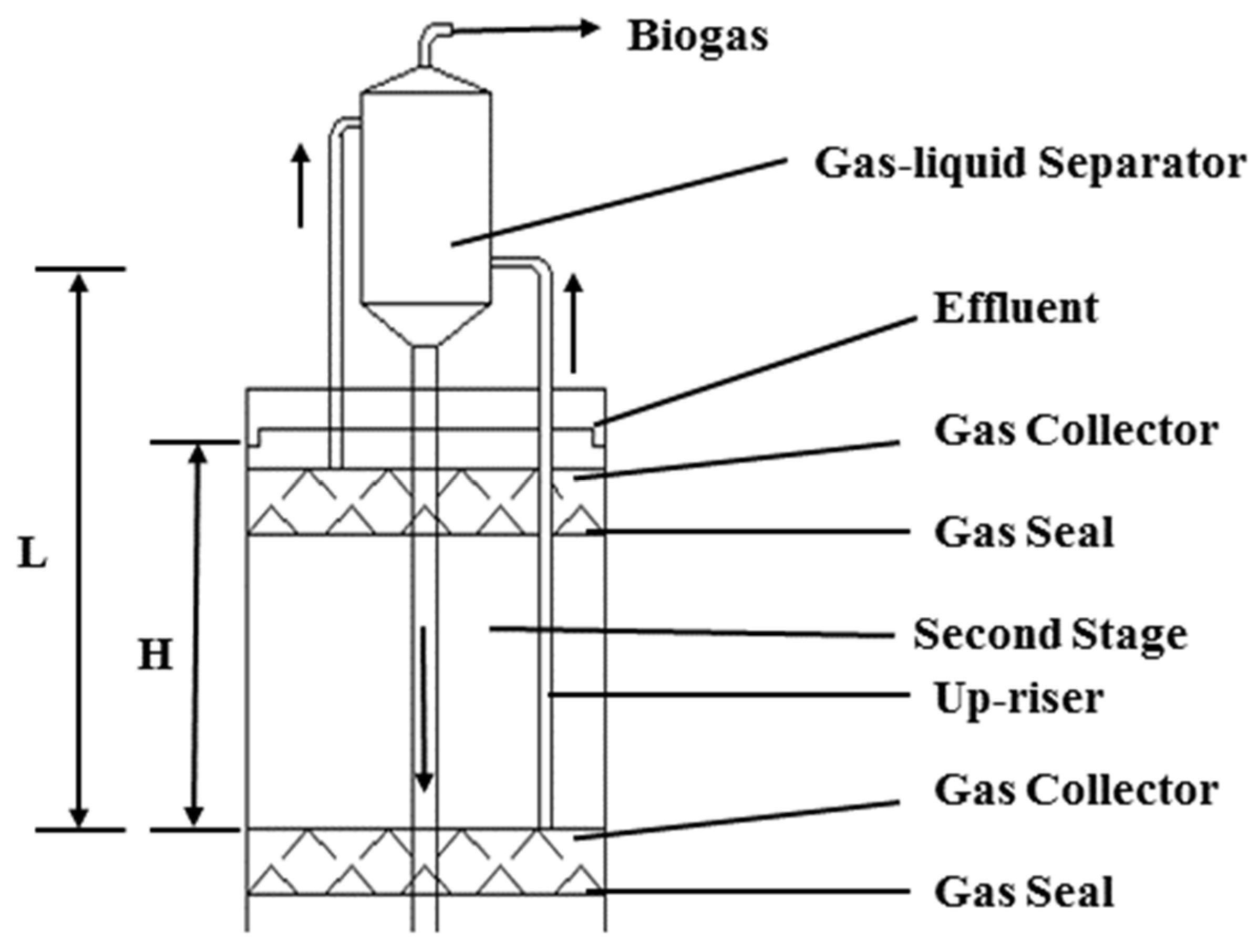
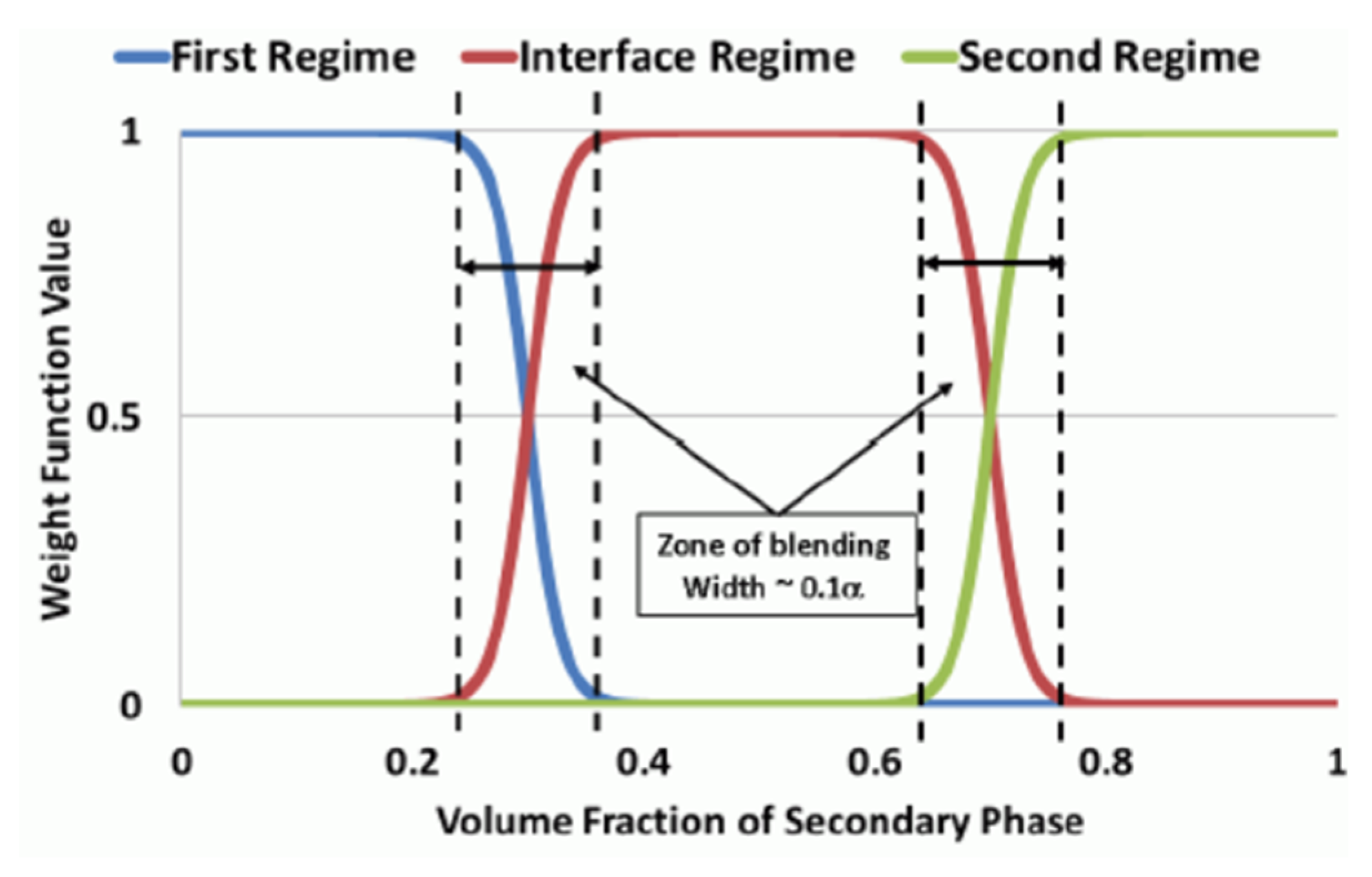
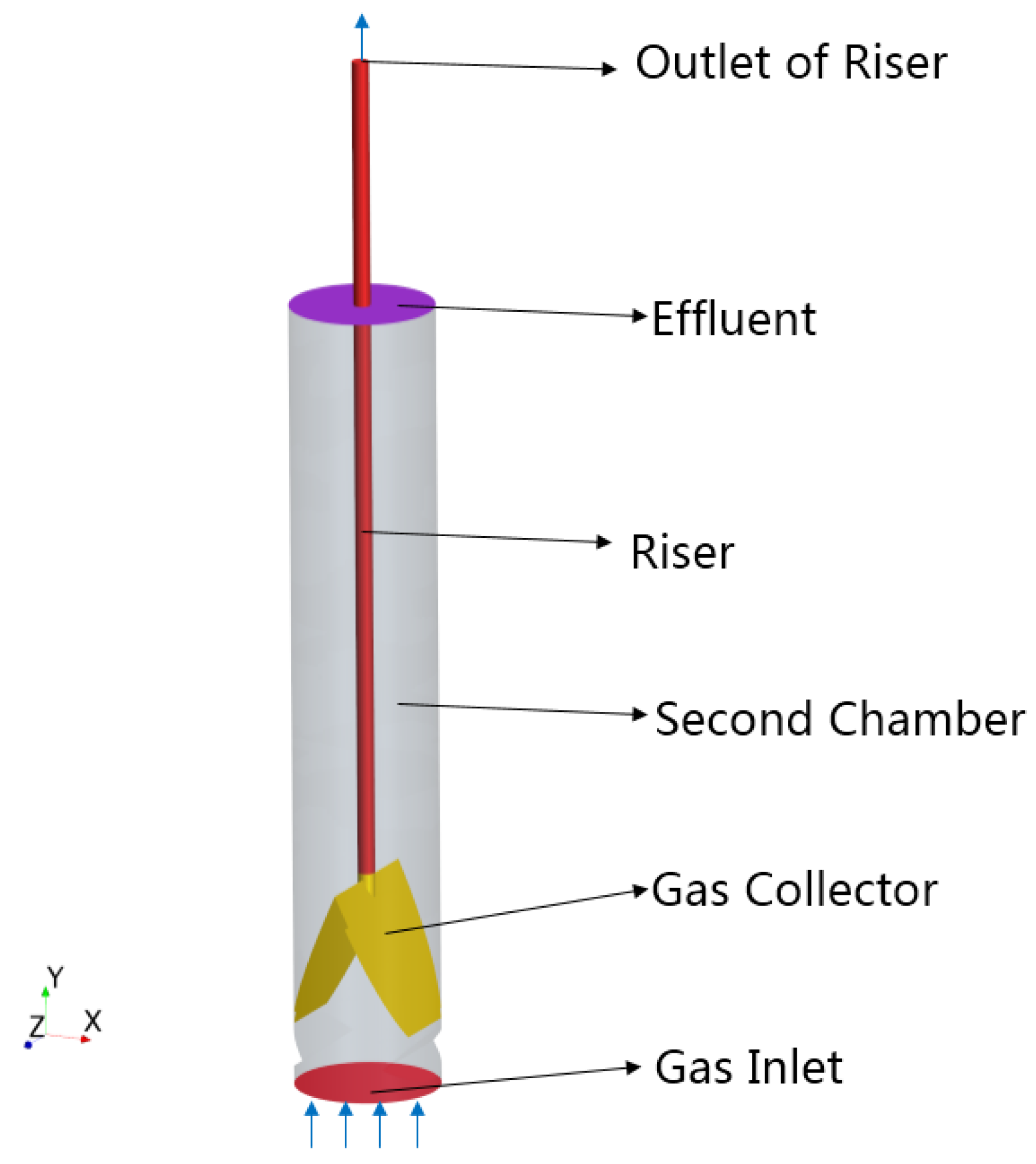


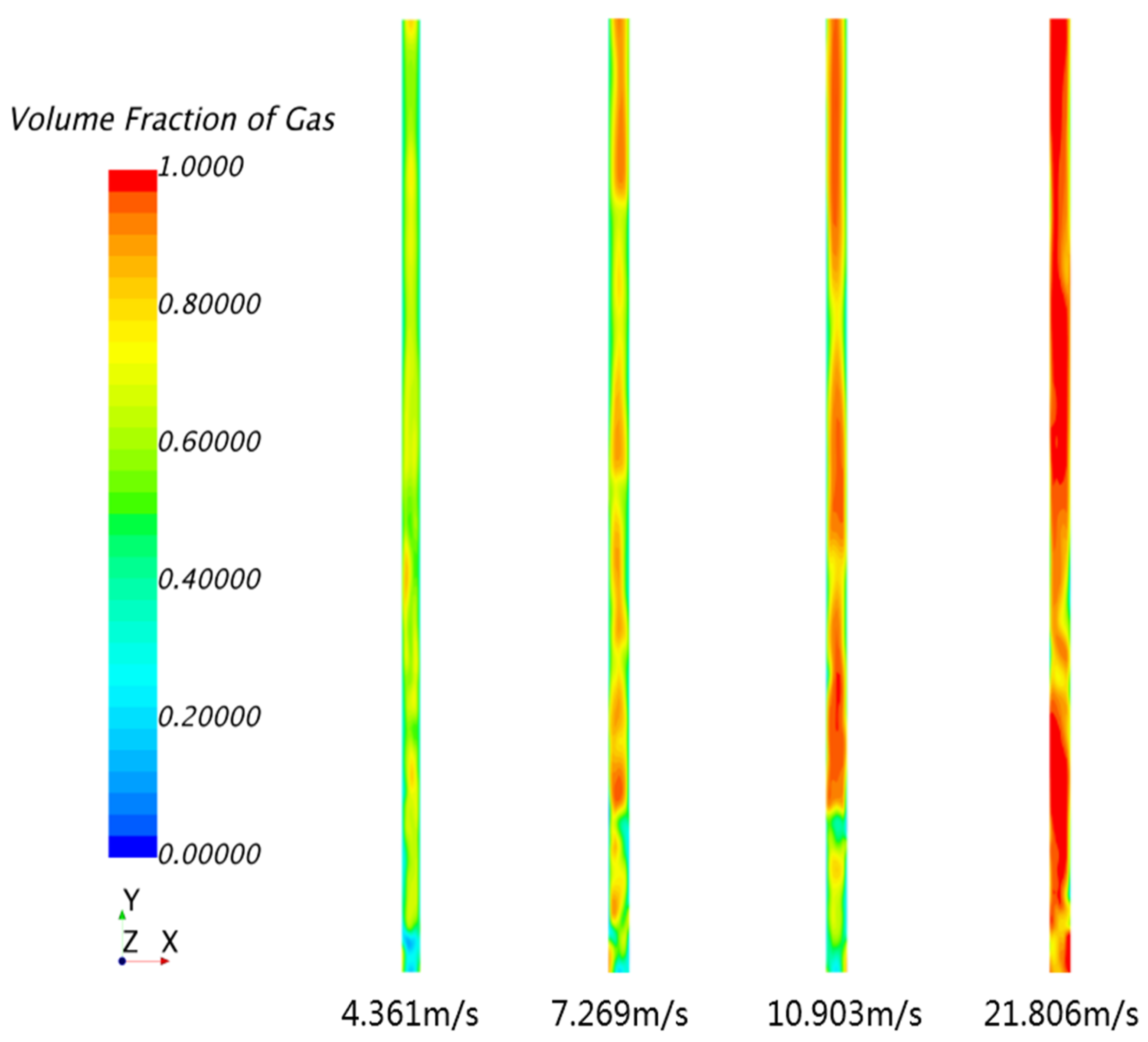


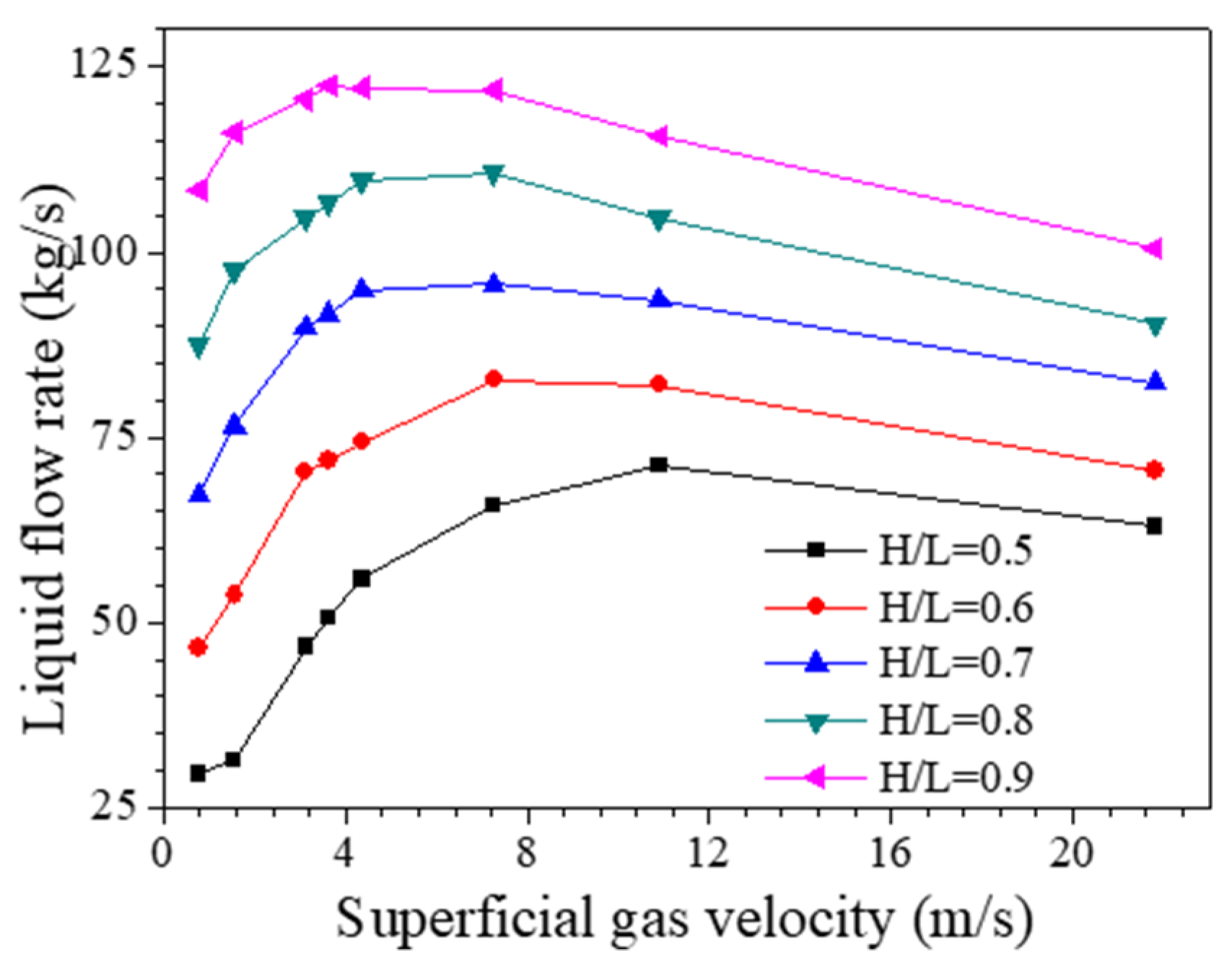
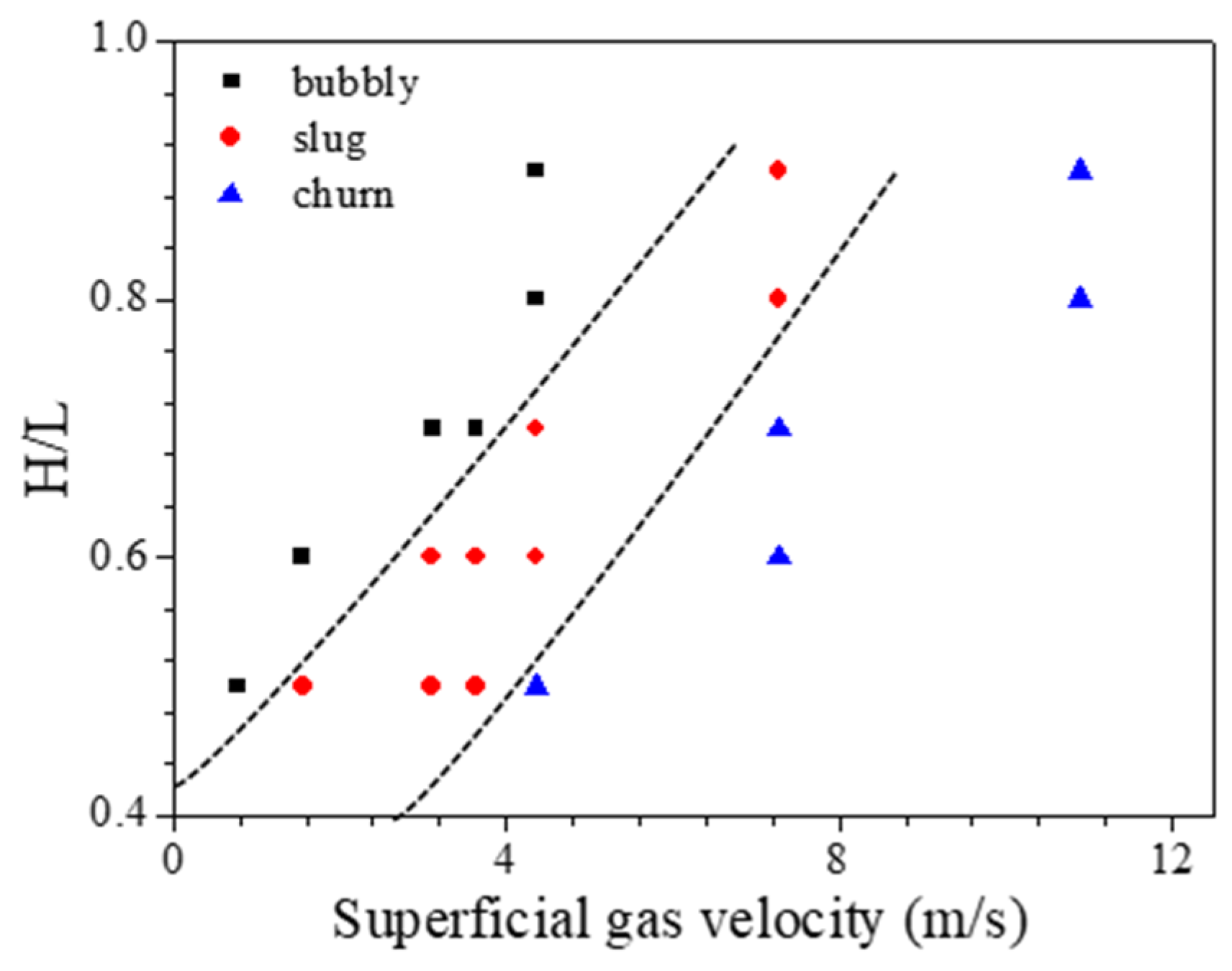
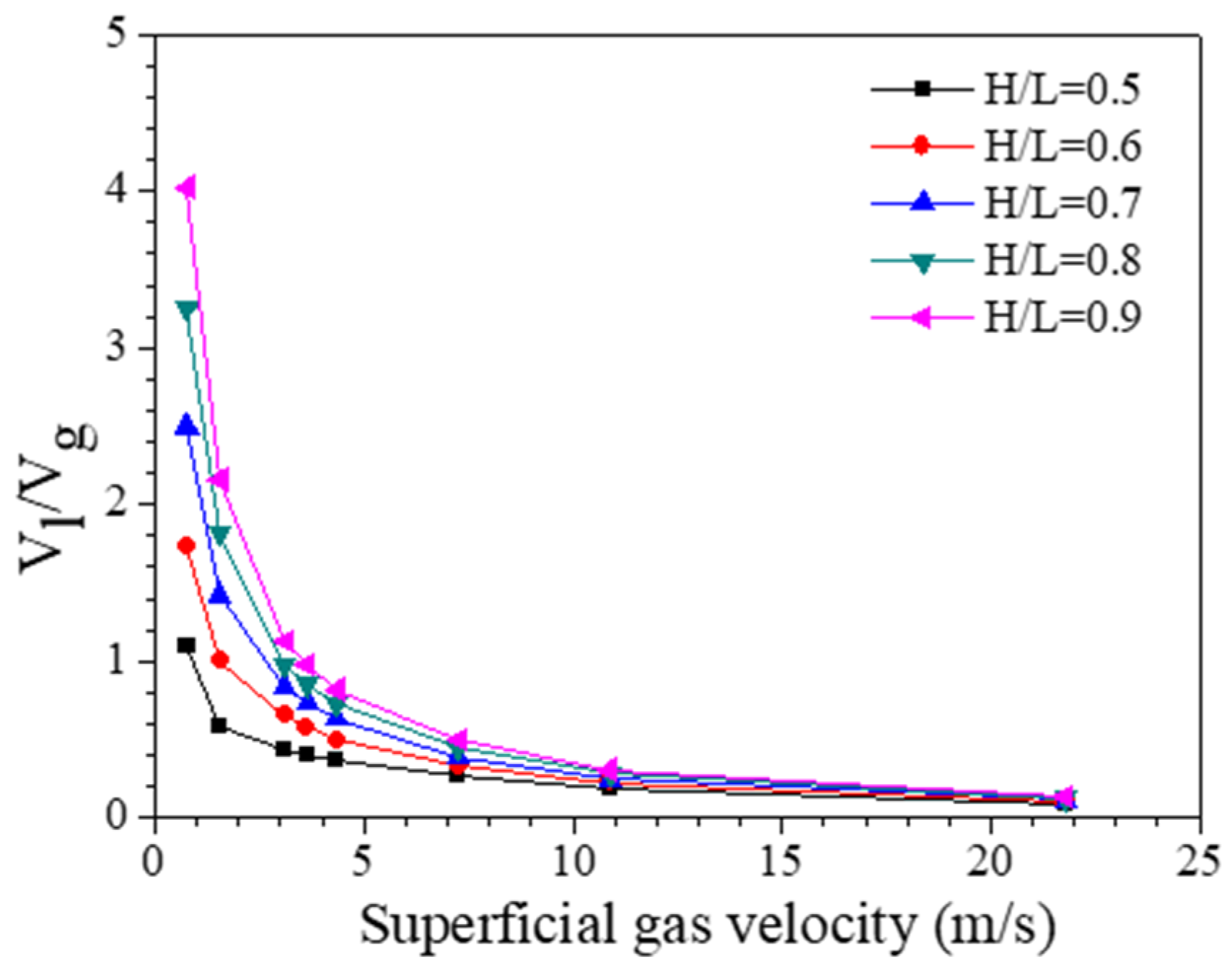
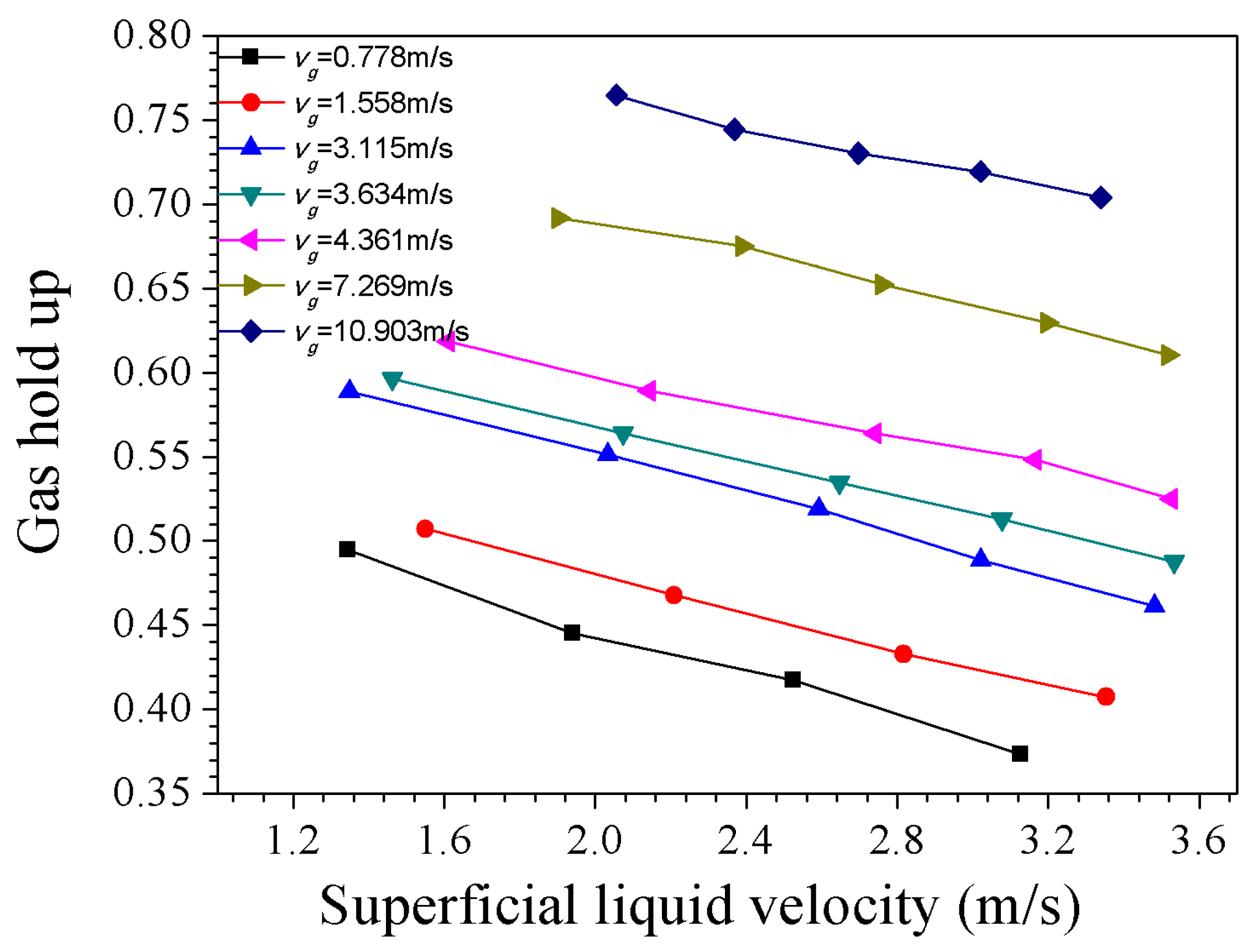
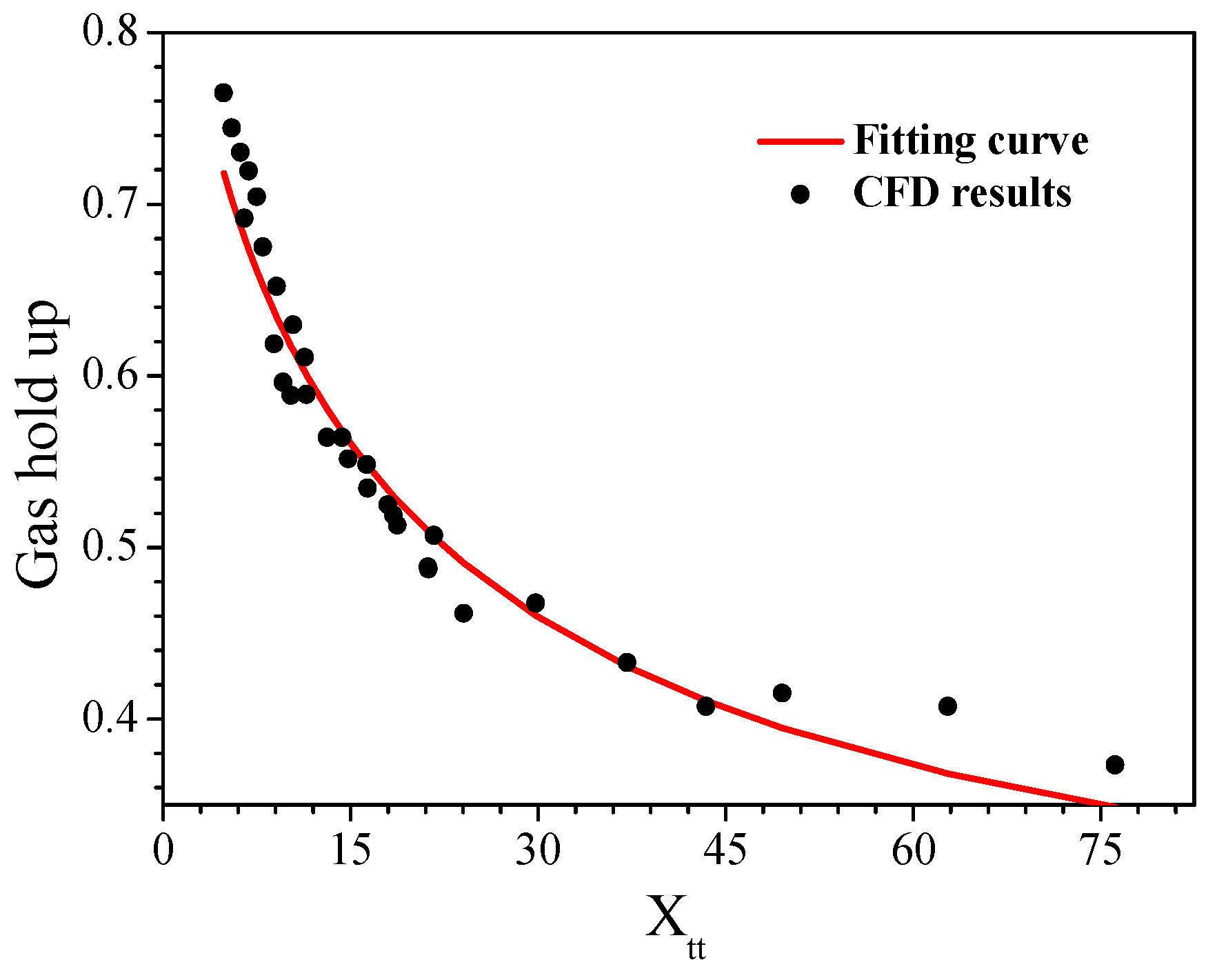
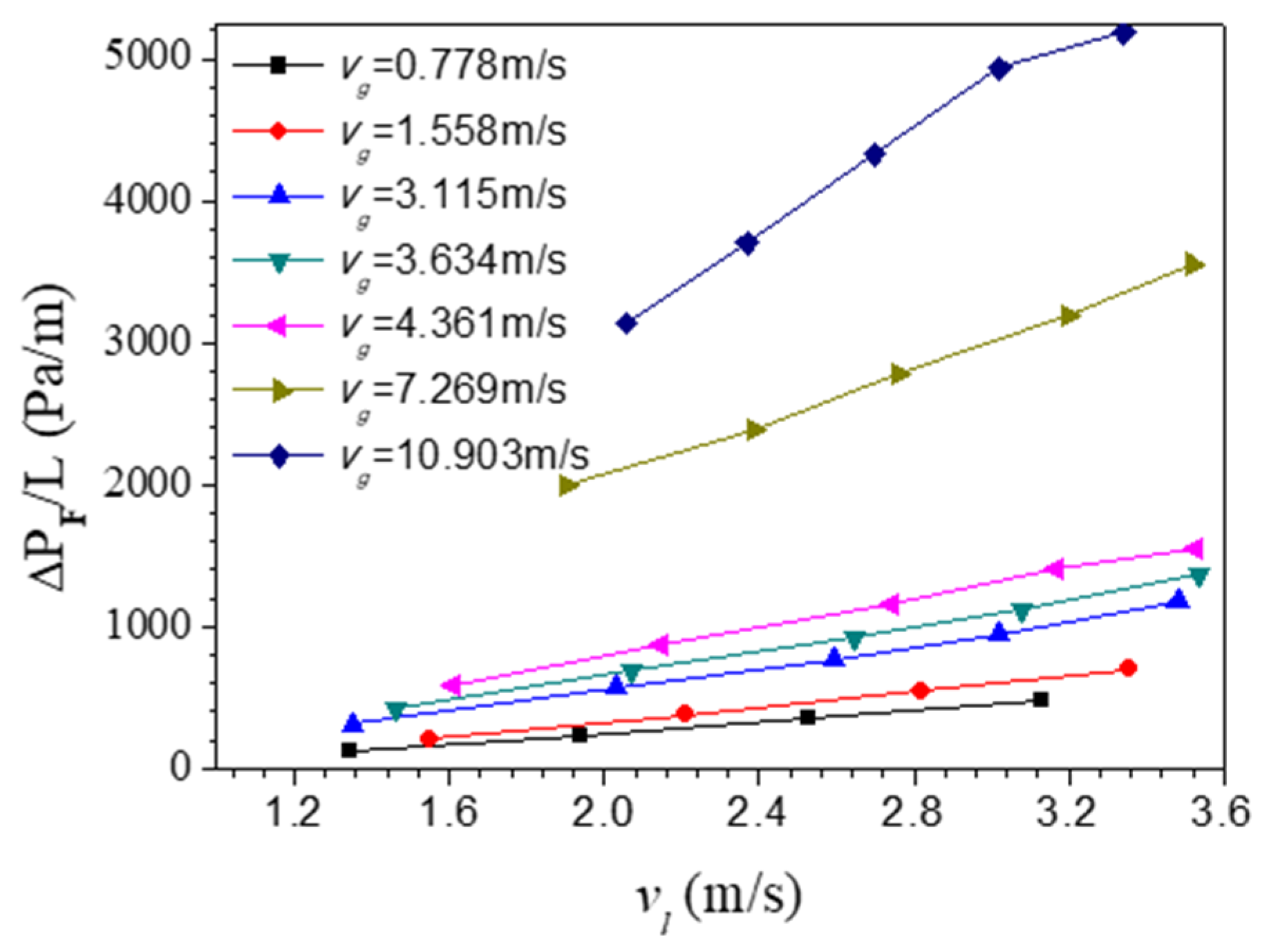

© 2019 by the authors. Licensee MDPI, Basel, Switzerland. This article is an open access article distributed under the terms and conditions of the Creative Commons Attribution (CC BY) license (http://creativecommons.org/licenses/by/4.0/).
Share and Cite
Wang, S.; Dong, H.; Geng, Z.; Dong, X. CFD Study of Gas Holdup and Frictional Pressure Drop of Vertical Riser Inside IC Reactor. Processes 2019, 7, 936. https://doi.org/10.3390/pr7120936
Wang S, Dong H, Geng Z, Dong X. CFD Study of Gas Holdup and Frictional Pressure Drop of Vertical Riser Inside IC Reactor. Processes. 2019; 7(12):936. https://doi.org/10.3390/pr7120936
Chicago/Turabian StyleWang, Sheng, He Dong, Zhongfeng Geng, and Xiuqin Dong. 2019. "CFD Study of Gas Holdup and Frictional Pressure Drop of Vertical Riser Inside IC Reactor" Processes 7, no. 12: 936. https://doi.org/10.3390/pr7120936
APA StyleWang, S., Dong, H., Geng, Z., & Dong, X. (2019). CFD Study of Gas Holdup and Frictional Pressure Drop of Vertical Riser Inside IC Reactor. Processes, 7(12), 936. https://doi.org/10.3390/pr7120936




